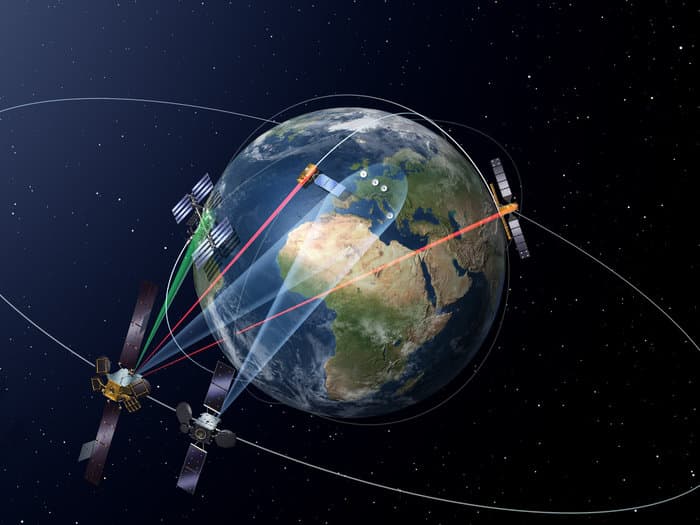ESA To Set Up 'Data Highway' In Space: First Laser Node Launched
In an effort to predict and monitor natural disasters with increased accuracy, the European Space Agency (ESA), in association with Airbus Defence and Space, has launched the first building block of the European Data Relay Satellite (EDRA). The EDRS-A node is the first part of a new 500 million euro data highway in space, and will transmit information using a new laser based communication system.

The node was mounted on the Eutelsat 9B communications satellite launched using a Proton rocket, which took off from the Baikonur Cosmodrome in Kazakhstan. The pairing of the node with the Eutelsat satellite was done to decrease expenses, as the financial burden was shared by ESA and Eutelsat.
The satellite carrying the node will orbit Earth at a distance of 36,000 km, and will be used to relay data to and from Earth as well as other satellites. The new laser-based technology on the EDRS nodes is capable of transmitting data at a speed of 1.8 Gigabits a second, and is also able to lock on to moving targets on Earth. The EDRS also uses multiple satellites for information relay, and so would not have to wait for stations on Earth to come into a particular satellite’s view to transmit data. This will facilitate the faster transfer of large amounts of data between multiple sources/destinations, thereby creating a more efficient early warning/monitoring system.
The EDRS will also be used to relay data from Europe’s Copernicus Earth observation project to users across the globe.
The second node of the EDRS, the EDRS-C, will be launched by mid-2017, also coupled with a Eutelsat commercial satellite. This could be followed by others, and Eutelsat has expressed its willingness to continue it’s cooperation with ESA in the future.
Source: #-Link-Snipped-#

The node was mounted on the Eutelsat 9B communications satellite launched using a Proton rocket, which took off from the Baikonur Cosmodrome in Kazakhstan. The pairing of the node with the Eutelsat satellite was done to decrease expenses, as the financial burden was shared by ESA and Eutelsat.
The satellite carrying the node will orbit Earth at a distance of 36,000 km, and will be used to relay data to and from Earth as well as other satellites. The new laser-based technology on the EDRS nodes is capable of transmitting data at a speed of 1.8 Gigabits a second, and is also able to lock on to moving targets on Earth. The EDRS also uses multiple satellites for information relay, and so would not have to wait for stations on Earth to come into a particular satellite’s view to transmit data. This will facilitate the faster transfer of large amounts of data between multiple sources/destinations, thereby creating a more efficient early warning/monitoring system.
The EDRS will also be used to relay data from Europe’s Copernicus Earth observation project to users across the globe.
The second node of the EDRS, the EDRS-C, will be launched by mid-2017, also coupled with a Eutelsat commercial satellite. This could be followed by others, and Eutelsat has expressed its willingness to continue it’s cooperation with ESA in the future.
Source: #-Link-Snipped-#
0
